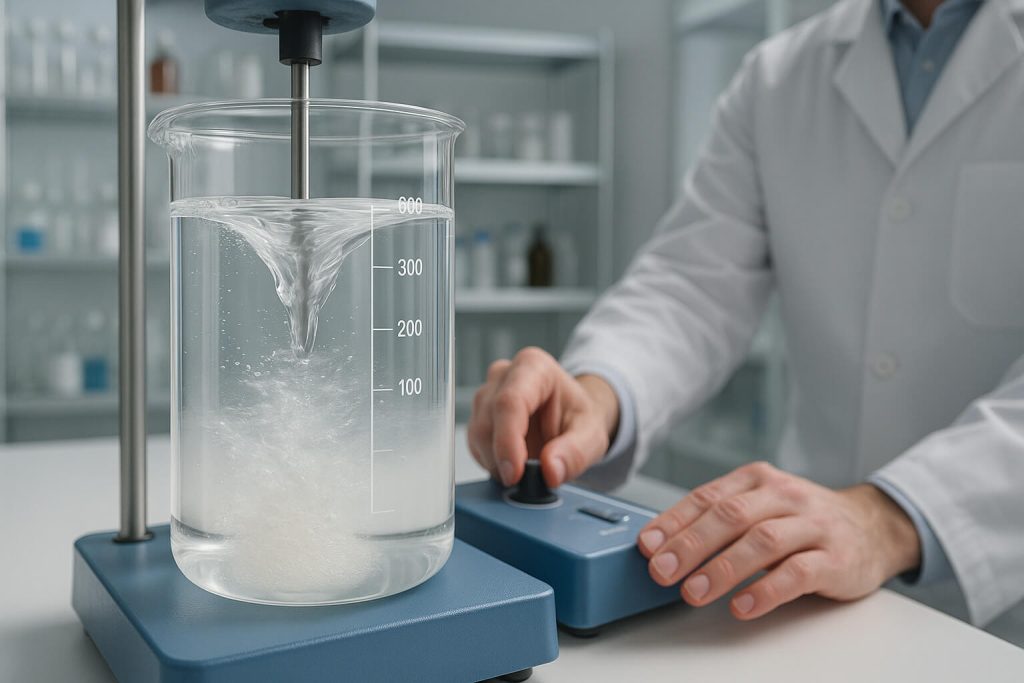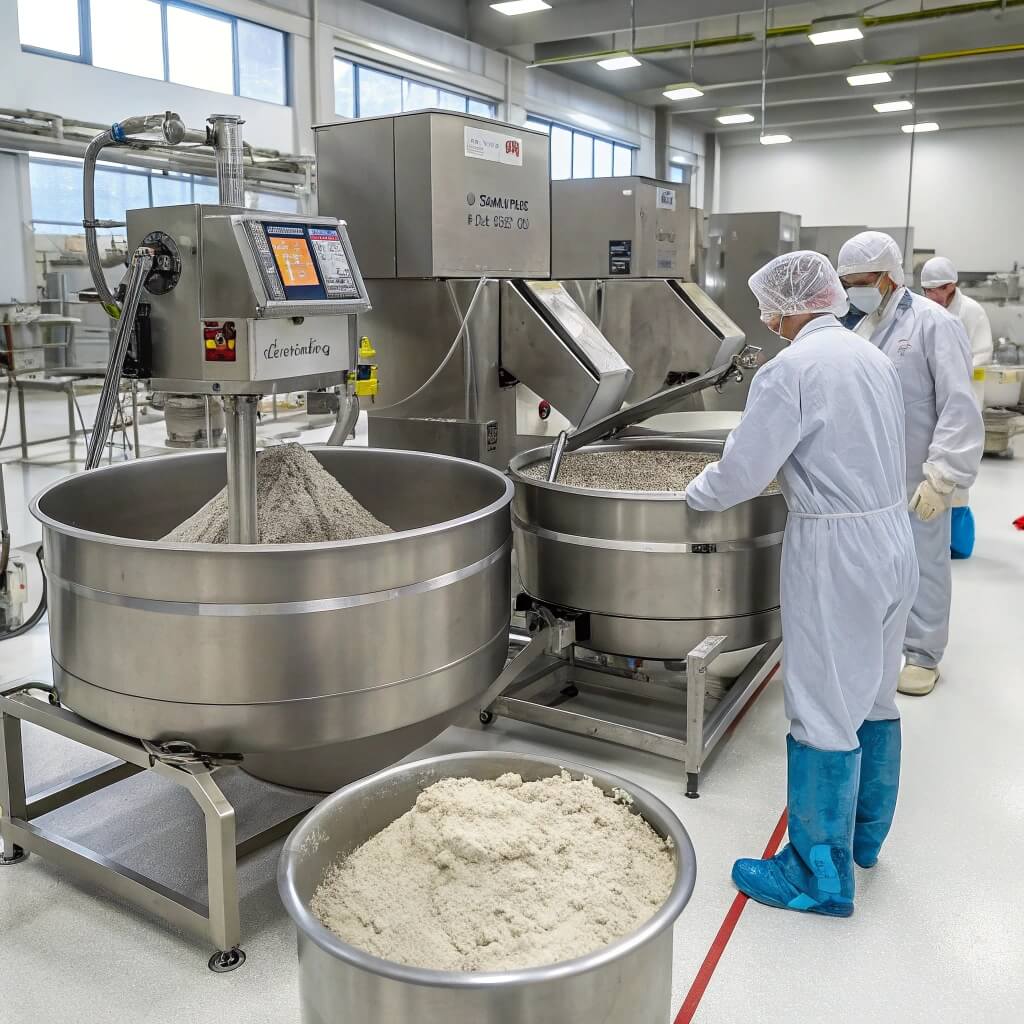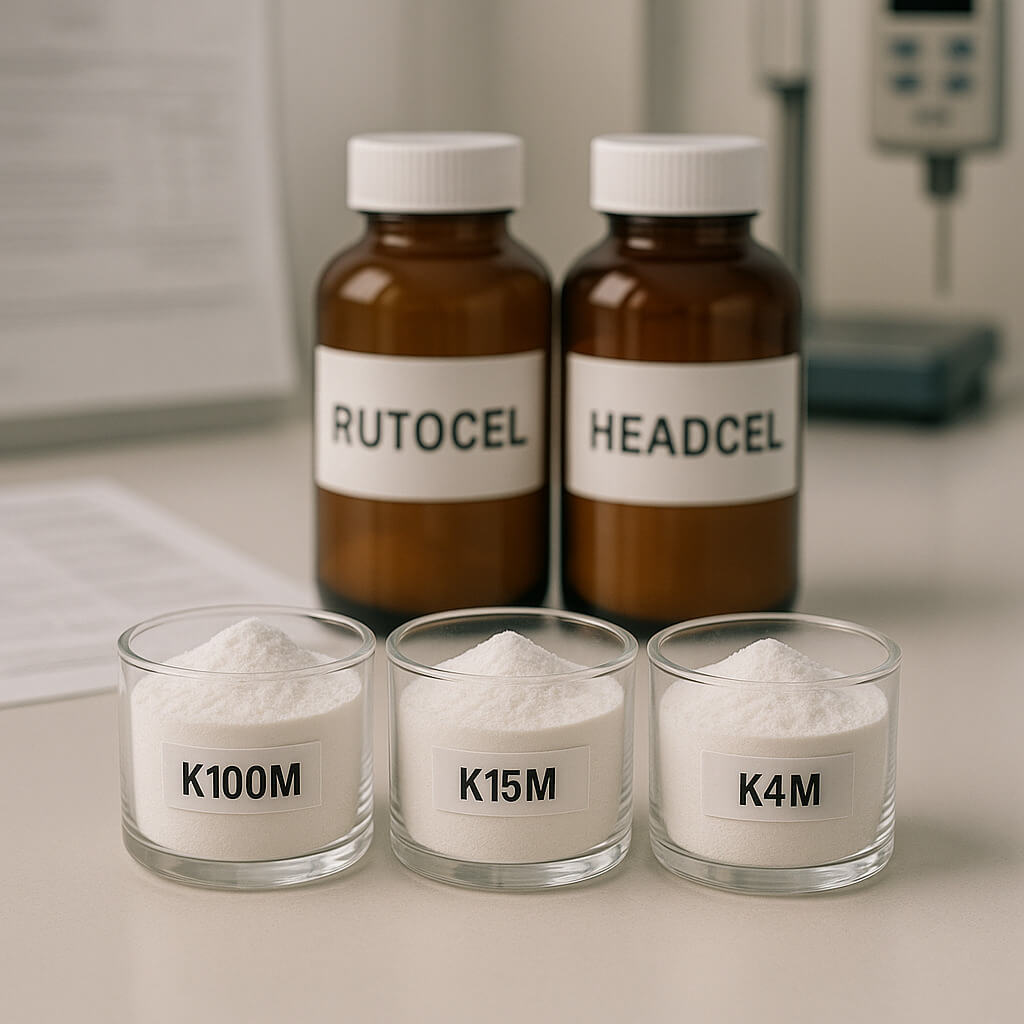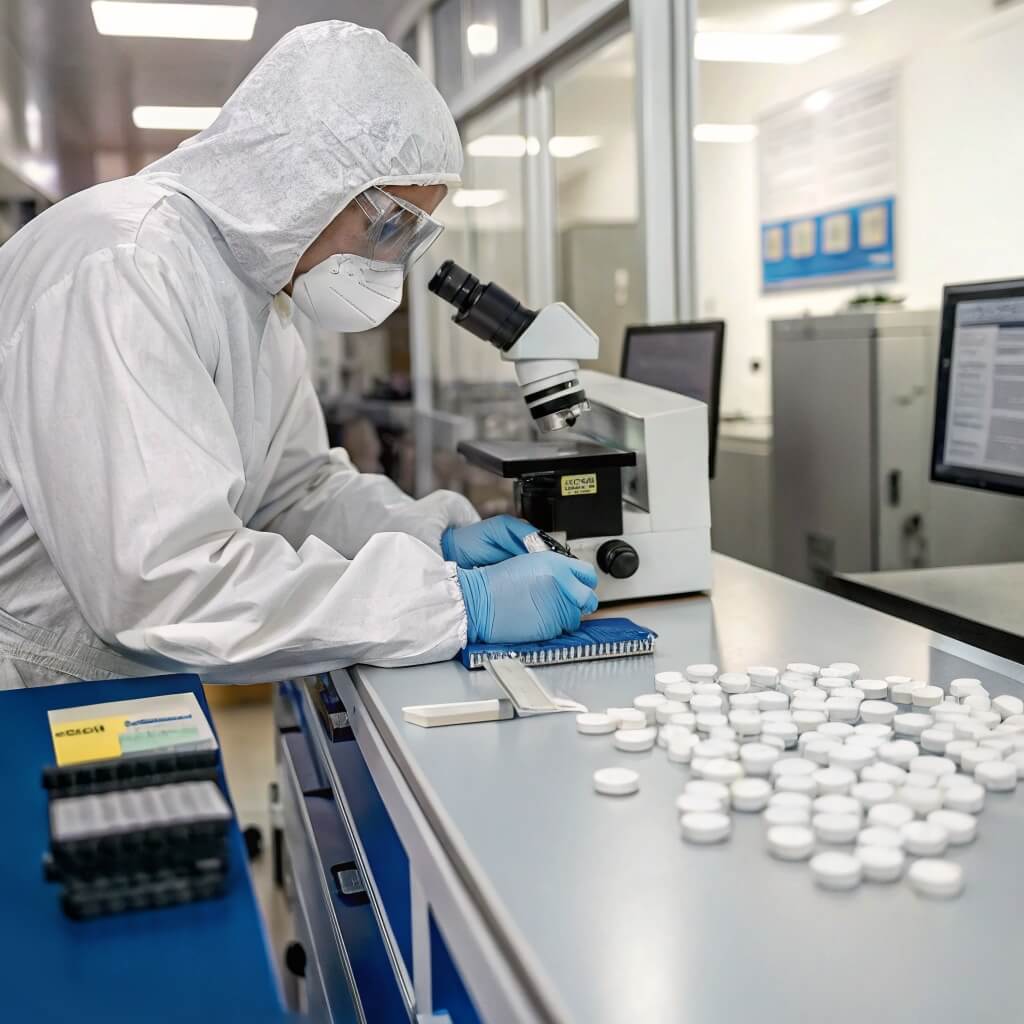Hydroxypropyl Methylcellulose (HPMC) is a widely used polymer in industries ranging from construction to pharmaceuticals and food production. Its unique properties, especially its viscosity, make it a versatile ingredient in many applications. But here’s the kicker – understanding how viscosity affects the performance of HPMC is key to optimizing its use across these industries. In this article, we’ll explore what factors influence the viscosity of HPMC and how to control them for different applications.

1. What is Hydroxypropyl Methylcellulose (HPMC) and How Does Viscosity Play a Role?
Hydroxypropyl Methylcellulose (HPMC) is a cellulose derivative modified by the introduction of hydroxypropyl and methyl groups. This process enhances its solubility in water and makes it highly effective in various industrial applications, including as a thickening agent, emulsifier, and stabilizer. Ready for the good part? The viscosity of HPMC plays a crucial role in determining its performance, particularly in self-leveling mortars, pharmaceuticals, and food products.
In construction, HPMC’s viscosity impacts the flow and application of products like tile adhesives, mortars, and plasters. Higher viscosity ensures that the mixture is smooth and easy to spread while retaining its consistency. In pharmaceuticals, viscosity controls the release rate of active ingredients in tablets or capsules. In the food industry, viscosity is essential for achieving the desired texture and stability in products like sauces and dressings.
The ability to adjust the viscosity of HPMC allows manufacturers to fine-tune products for specific performance requirements. Whether it’s ensuring that a pharmaceutical tablet dissolves at the right rate or that a construction material flows smoothly during application, viscosity is key to optimizing product quality and functionality.
| طلب | دور HPMC | Effect of Viscosity |
|---|---|---|
| بناء | Mortars, adhesives, plasters | Smooth application, workability |
| المستحضرات الصيدلانية | أقراص الإطلاق المُتحكم فيه | Drug release, consistency |
| طعام | Sauces, dressings, emulsions | Texture, stability, smoothness |
2. How Does Molecular Weight Affect the Viscosity of HPMC?
The molecular weight of HPMC has a direct impact on its viscosity. What’s the real story here? As the molecular weight increases, the polymer chains in HPMC become longer and more entangled, which results in higher viscosity. This increased viscosity is especially important in applications where gel formation, thickening, or controlled release is required.
For example, in pharmaceutical formulations, high molecular weight HPMC is used in controlled-release tablets. The higher viscosity helps create a gel matrix that slowly releases the active ingredients over time. In contrast, low molecular weight HPMC results in a less viscous solution, which is ideal for fast-dissolving tablets or other applications where quick dissolution is needed.
In construction, higher molecular weight HPMC improves the strength and stability of mortar formulations, making them more resistant to wear and tear over time. For food applications, varying molecular weight HPMC allows for fine control over texture and consistency, ensuring that products like sauces and dressings achieve the desired mouthfeel and viscosity.
| الوزن الجزيئي | تأثير اللزوجة | طلب |
|---|---|---|
| عالي | Increased viscosity, gel formation | Controlled-release tablets, mortars |
| قليل | Lower viscosity, faster dissolution | Fast-dissolving tablets, thin coatings |
3. How Does Temperature Influence the Viscosity of HPMC?
Temperature has a significant effect on the viscosity of HPMC solutions. But here’s the kicker – as the temperature increases, the viscosity typically decreases. This happens because the polymer chains in HPMC move more freely at higher temperatures, leading to a less viscous solution. This can be particularly important in industries where temperature fluctuations are common, such as pharmaceuticals and food production.
In pharmaceuticals, the temperature at which the HPMC solution is processed can impact its ability to form gels and control drug release. If the temperature is too high, the viscosity may drop, affecting the gel’s ability to slow the release of active ingredients. Conversely, in cold temperatures, the viscosity may increase, leading to thicker solutions that are harder to process.
In construction, temperature changes during application can affect how HPMC behaves in mortars and adhesives. For instance, in hot weather, the viscosity may decrease, making it harder to control the flow of the mixture. On the other hand, in colder conditions, higher viscosity may make the material harder to spread, requiring adjustments in formulation to ensure consistent application.
| درجة حرارة | تأثير اللزوجة | طلب |
|---|---|---|
| عالي | Decreased viscosity | Pharmaceuticals, food production |
| قليل | Increased viscosity | Construction, food products |
4. What Role Does Concentration Play in HPMC Viscosity?
The concentration of HPMC in a solution is directly related to its viscosity. Ready for the good part? As the concentration of HPMC increases, the viscosity of the solution becomes thicker. This occurs because a higher concentration means more polymer chains in the solution, leading to greater resistance to flow.
In construction, adjusting the concentration of HPMC allows manufacturers to achieve the desired consistency for different applications. Higher concentrations are used in adhesives and mortars to provide the necessary thickness and workability, while lower concentrations are ideal for more fluid formulations.
In pharmaceuticals, varying the concentration of HPMC is essential for controlling the release of active ingredients. Higher concentrations create thicker gels that release drugs more slowly, while lower concentrations provide quicker dissolution for immediate-release formulations.
In food applications, concentration affects the texture and mouthfeel of products. Higher concentrations of HPMC are used in thicker products like sauces, while lower concentrations are used for lighter, more fluid textures.
| تركيز | تأثير اللزوجة | طلب |
|---|---|---|
| عالي | Increased viscosity, thicker solutions | Adhesives, controlled-release tablets |
| قليل | Decreased viscosity, thinner solutions | Fast-dissolving tablets, beverages |
5. How Does pH Affect the Viscosity of HPMC?
pH is another critical factor that affects the viscosity of HPMC. What’s the real story here? HPMC is generally stable across a wide pH range, but extreme pH values can significantly alter its viscosity and solubility. Acidic or alkaline conditions can cause HPMC to lose its thickening properties or precipitate out of solution.
In pharmaceuticals, the pH of a formulation is critical in ensuring that the HPMC performs as intended. For example, certain controlled-release tablets rely on specific pH conditions to activate or deactivate the gel matrix formed by HPMC, controlling the release of the active ingredient. In construction, the pH of the mortar can affect the stability of the mixture, with highly acidic or alkaline conditions leading to weaker bonds and less effective adhesives.
In food applications, pH control is essential for maintaining the texture and stability of emulsions. HPMC helps stabilize mixtures like salad dressings, but the pH must be balanced to ensure that the thickening properties are maintained.
| مستوى الرقم الهيدروجيني | تأثير اللزوجة | طلب |
|---|---|---|
| Acidic | Reduced viscosity, precipitation | الأدوية والأغذية |
| Alkaline | Decreased solubility | Construction, food products |
| Neutral | اللزوجة المستقرة | General applications |
6. How Do Additives Influence the Viscosity of HPMC?
Additives play a key role in modifying the viscosity of HPMC solutions. Ready for the good part? By incorporating additives like plasticizers, salts, or stabilizers, manufacturers can fine-tune the viscosity of HPMC for specific applications. These additives alter the molecular interactions within the HPMC solution, allowing for better control over the final product’s consistency and performance.
In construction, additives such as plasticizers are used to reduce viscosity and improve the workability of mortars and adhesives. This allows the mixture to flow more easily without sacrificing the bond strength. In pharmaceuticals, stabilizers and other excipients are added to HPMC to improve its gel-forming properties, ensuring that tablets release the active ingredient at the desired rate.
In food applications, additives like salts or sugars are used to adjust the viscosity of HPMC-based emulsions, creating the perfect texture for sauces, dressings, and other products. These additives can also improve the shelf life and stability of the product.
| Additive | تأثير اللزوجة | طلب |
|---|---|---|
| المواد الملينة | Decreases viscosity, improves workability | Construction, adhesives |
| المثبتات | Increases viscosity, enhances stability | الأدوية والأغذية |
| Salts/Sugars | Adjusts viscosity, improves texture | Food products, emulsions |
7. What is the Effect of Shear Rate on the Viscosity of HPMC Solutions?
Shear rate refers to the speed at which a fluid is deformed under stress. But here’s the kicker – HPMC solutions exhibit shear-thinning behavior, meaning their viscosity decreases as the shear rate increases. This is particularly important in applications where the material must flow easily under pressure, such as in spraying or mixing.
In construction, shear thinning allows HPMC-based mortars to flow easily when applied but thicken once spread on the surface, ensuring that the material stays in place without running off. In pharmaceuticals, shear thinning helps ensure that tablets dissolve quickly when taken, but the viscosity increases when exposed to lower shear forces in the gastrointestinal tract, controlling the release of active ingredients.
In food, shear thinning is critical for products like sauces and dressings, where the viscosity must decrease under stirring or shaking, but remain thick when at rest.
| معدل القص | تأثير اللزوجة | طلب |
|---|---|---|
| High Shear Rate | Lower viscosity, easier flow | المستحضرات الصيدلانية والبناء |
| Low Shear Rate | Higher viscosity, thicker solution | Food products, controlled release |
8. How Can Viscosity Be Measured in HPMC Solutions?
Viscosity is typically measured using a variety of tools, such as viscometers and rheometers. What’s the real story here? Accurate viscosity measurement is essential for ensuring that HPMC solutions perform as expected in their respective applications.
أ Brookfield viscometer is commonly used in industrial settings to measure the flow properties of HPMC solutions, while a rotational rheometer offers more detailed insights into how the viscosity changes under different shear rates and temperatures. These instruments provide valuable data for adjusting formulations and ensuring consistency across batches.
In industries like construction and pharmaceuticals, regular viscosity testing ensures that the product performs consistently, even when produced at scale. Without these measurements, manufacturers risk producing products with inconsistent performance, leading to potential failures in the field.
| Viscosity Measurement Tool | يستخدم | طلب |
|---|---|---|
| مقياس اللزوجة بروكفيلد | Measures viscosity at low shear rates | الأدوية والأغذية |
| Rotational Rheometer | يقيس اللزوجة بمعدلات قص مختلفة | Construction, R&D |
| مقياس اللزوجة الشعري | Measures viscosity using flow time | Laboratory testing, R&D |
9. How Does the Degree of Substitution in HPMC Affect Its Viscosity?
The degree of substitution (DS) refers to the number of hydroxyl groups in the cellulose molecule that are substituted by hydroxypropyl or methyl groups. But here’s the kicker – the DS plays a crucial role in determining the solubility, viscosity, and gelation properties of HPMC.
Higher degrees of substitution lead to lower viscosity since the cellulose structure is more modified, resulting in fewer intermolecular interactions. In contrast, a lower DS leads to higher viscosity as the polymer chains interact more strongly with water. In practical terms, adjusting the DS allows manufacturers to control the viscosity of HPMC-based products for different applications, from controlled-release pharmaceuticals to high-strength mortars.
| درجة الاستبدال | تأثير اللزوجة | طلب |
|---|---|---|
| ارتفاع DS | Lower viscosity, better solubility | Pharmaceuticals, cosmetics |
| انخفاض DS | Higher viscosity, stronger gelation | Mortars, controlled release tablets |
10. How Do Environmental Factors Affect the Viscosity of HPMC in Industrial Applications?
Environmental conditions such as temperature, humidity, and altitude can all affect the viscosity of HPMC solutions. What’s the real story here? Manufacturers need to consider these factors when formulating HPMC-based products to ensure consistency and performance, especially when operating in regions with fluctuating environmental conditions.
For instance, in high-altitude locations where atmospheric pressure is lower, HPMC solutions may exhibit different flow properties compared to sea level. Similarly, humidity can influence the water retention properties of HPMC, affecting how the material behaves during application and curing.
Understanding these factors allows manufacturers to adjust formulations to meet local environmental conditions, ensuring that HPMC performs as expected
regardless of external influences.
| Environmental Factor | التأثير على اللزوجة | طلب |
|---|---|---|
| درجة حرارة | Viscosity decreases with heat | المستحضرات الصيدلانية والبناء |
| Humidity | Affects water retention | Food products, construction |
| Altitude | Lower pressure alters viscosity | Remote locations, R&D |
خاتمة
In conclusion, understanding the factors that affect the viscosity of Hydroxypropyl Methylcellulose (HPMC) is essential for optimizing its use in various industrial applications. Whether it’s adjusting viscosity for self-leveling mortars in construction, controlling drug release in pharmaceuticals, or ensuring the right texture in food products, HPMC’s viscosity is key to achieving optimal performance. By taking into account factors such as molecular weight, temperature, concentration, pH, and environmental conditions, manufacturers can ensure that HPMC performs at its best in every application.
قسم الأسئلة الشائعة
س1: ما هو هيدروكسي بروبيل ميثيل السليلوز (HPMC)؟
أ1: HPMC is a cellulose derivative used as a thickener, stabilizer, and binder in a wide range of industries, including construction, pharmaceuticals, and food production.
س2: How does molecular weight affect the viscosity of HPMC?
أ2: Higher molecular weight increases HPMC viscosity by creating longer polymer chains that increase resistance to flow. This is ideal for applications that require gel formation or controlled release.
س3: How does temperature influence the viscosity of HPMC?
أ3: Higher temperatures typically decrease HPMC viscosity by increasing molecular movement. This can affect how HPMC behaves in applications such as pharmaceuticals and construction.
س4: What role do additives play in adjusting the viscosity of HPMC?
أ4: Additives like plasticizers, salts, and stabilizers can modify HPMC viscosity, making it more fluid for easier application or thicker for stronger gels, depending on the application.
س5: How can viscosity be measured in HPMC solutions?
أ5: Viscosity is commonly measured using tools like the Brookfield viscometer or rotational rheometer. These instruments help ensure that the HPMC solution meets the desired viscosity for specific applications.




